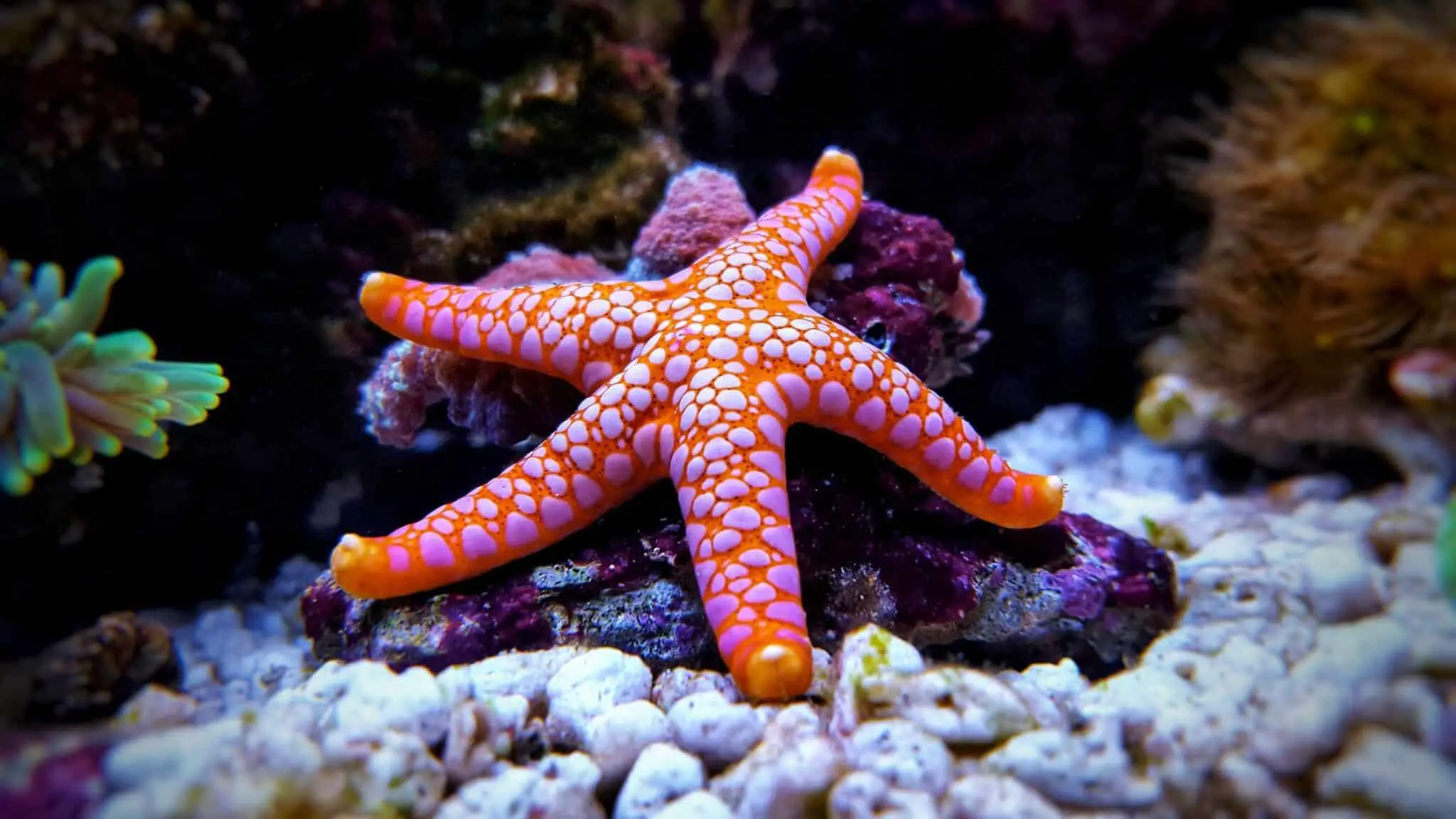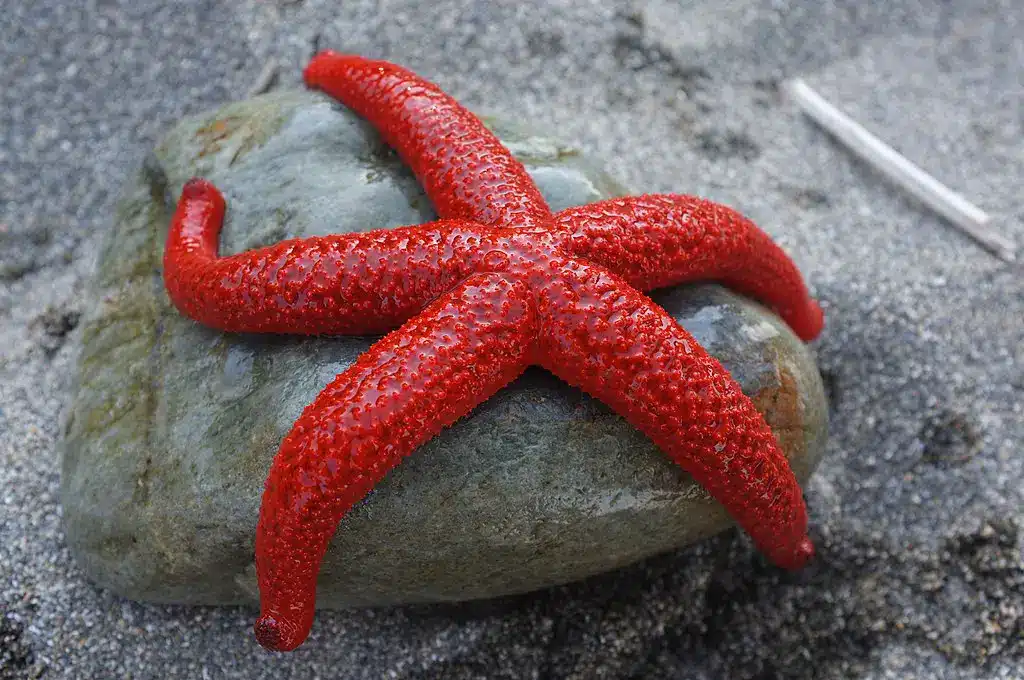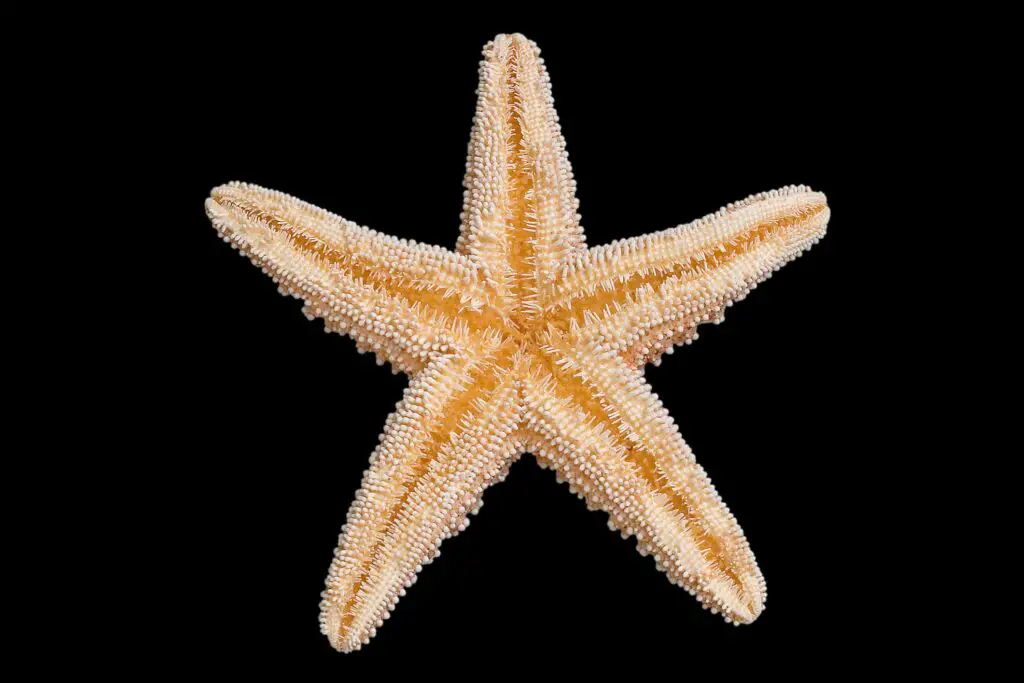Do Starfish Have Gills

Introduction
Do Starfish Have Gills: Starfish, or sea Water, are fascinating marine creatures found in oceans around the world. Their unique appearance and behaviours have long captured the curiosity of both scientists and beachcombers. One question that often arises when studying starfish is whether or not they have gills.
Gills are specialised respiratory organs commonly associated with aquatic animals like fish and some crustaceans. They allow these creatures to extract oxygen from water, facilitating their survival in underwater environments. However, starfish have a rather different approach to respiration.
Unlike fish, starfish do not possess gills. Instead, they employ a system of tiny tube feet and specialised structures called papulae to respire. These tube feet cover the undersides of their arms and serve multiple purposes, including locomotion and respiration. The papulae are small, finger-like projections located on their dorsal surface, and they are filled with coelomic fluid, which enables gas exchange.
Intriguingly, starfish have evolved this unique respiratory system that adapts them to their environment. This article delves deeper into the intricacies of starfish anatomy, exploring how their respiratory adaptations contribute to their remarkable survival in the underwater world.

Do starfish have lungs or gills?
Obtaining oxygen
Sea stars don’t use gills or lungs to breathe. They rely on diffusion across surfaces in their body. For example, most oxygen is taken up from water that passes over their tube feet and papulae or skin gills. Skin gills are small projections near the base of the spines, usually on the topside.
Starfish, scientifically known as sea stars, do not possess lungs or gills like many terrestrial or aquatic animals. Instead, they rely on a unique system called a water vascular system to facilitate respiration and perform various other functions.
This system consists of a network of canals and tube feet that allow starfish to exchange gases and move. Oxygen and carbon dioxide are exchanged through small tube feet located on the underside of their arms. These tube feet are covered with tiny projections called papillae, which increase the surface area for gas exchange.
Seawater is drawn into the starfish’s water vascular system through a sieve-like structure called the madreporite, which acts as an entrance for seawater. The starfish then uses the water vascular system to extend and retract its tube feet, facilitating locomotion and helping with respiration.
Starfish do not possess lungs or gills; instead, they utilize their water vascular system to extract oxygen from seawater and expel carbon dioxide, allowing them to breathe and carry out essential life processes in their aquatic environments.
How does a starfish breathe?
Starfish breathe with the help of papules or skin gills on the surface of their body, absorbing the oxygen directly from the seawater.
Starfish, also known as sea stars, breathe through a unique and specialized system that doesn’t involve traditional lungs or gills. Instead, they rely on a network of tiny tube feet and a specialized water vascular system for respiration.
Here’s how a starfish breathes:
Water Vascular System: Starfish have a complex system of canals and tubes known as the water vascular system. This system not only aids in locomotion but also plays a crucial role in respiration.
Oxygen Exchange: Starfish obtain oxygen from the surrounding seawater. They use their tube feet, which are covered with small, finger-like projections called papillae, to extract oxygen from the water. These papillae increase the surface area for gas exchange.
Madreporite: Seawater enters the starfish’s water vascular system through a small, sieve-like structure called the madreporite, which is typically located on the top side of the starfish.
Gas Diffusion: As seawater enters the water vascular system, oxygen is diffused across the thin walls of the tube feet and into the starfish’s internal body cavity, or coelom. Here, the oxygen is transported to various cells and tissues for metabolic processes, while carbon dioxide, a waste product, is expelled back into the seawater.
In this way, starfish efficiently extract oxygen from their underwater environment without the need for lungs or gills, allowing them to thrive in marine ecosystems across the world’s oceans.
Do sea stars use gills?
You may be surprised to find out that sea stars have gill structures—although they don’t look like the gills seen on fish. The fuzzy-looking stuff on top of their bodies is actually their gill structures. Some sea star species can extend and retract these structures through their skin.
Sea stars, also known as starfish, do not use gills for respiration. Instead, they rely on a unique and specialized system called the water vascular system to extract oxygen from the water and carry out respiration. The water vascular system in sea stars serves multiple functions, including locomotion, feeding, and respiration. Here’s how it works for respiration:
Tube Feet: Sea stars have numerous tube feet located on the underside of their arms. These tube feet are equipped with small, finger-like projections called papillae that increase the surface area available for gas exchange.
Madreporite: Seawater enters the water vascular system through a small, sieve-like structure called the madreporite, typically located on the upper surface of the sea star. This entrance allows seawater to flow into the system.
Gas Exchange: As seawater enters the water vascular system, oxygen is extracted from the water as it passes over the thin walls of the tube feet. This oxygen is then transported to various cells and tissues within the sea star’s body for metabolic processes.
Carbon Dioxide Removal: Concurrently, carbon dioxide, a waste product of metabolism, is expelled into the seawater through the same process.
Where are starfish gills?
You may be surprised to find out that sea stars have gill structures—although they don’t look like the gills seen on fish. The fuzzy-looking stuff on top of their bodies is actually their gill structures. Some sea star species can extend and retract these structures through their skin.
Starfish, also known as sea stars, do not have gills like some other aquatic animals. Instead, they have a unique respiratory system that does not involve traditional gills. Starfish rely on a specialized system called the water vascular system for respiration.
The water vascular system consists of a network of canals and tube feet. It serves several functions, including locomotion, feeding, and respiration. Respiration in starfish occurs primarily through small projections called papillae located on the surface of their tube feet. These papillae are covered in tiny, hair-like structures called cilia.
When seawater enters the water vascular system through a sieve-like structure called the madreporite, it flows through the canals and over the papillae. Oxygen is extracted from the seawater through these thin-walled papillae and is then transported to various cells and tissues in the starfish’s body. Simultaneously, carbon dioxide, a waste product of metabolism, is expelled into the seawater.
What do starfish have?
Starfish are marine invertebrates. They typically have a central disc and usually five arms, though some species have a larger number of arms. The aboral or upper surface may be smooth, granular or spiny, and is covered with overlapping plates.
Starfish, also known as sea stars, are fascinating marine creatures that possess several unique and distinctive features adapted to their aquatic lifestyles. Here’s an overview of what starfish have:
Water Vascular System: One of the most remarkable features of starfish is their water vascular system, a network of canals and tube feet. This system is used for locomotion, feeding, and respiration. It enables them to move and capture prey, such as mollusks and other small invertebrates, by extending and retracting their tube feet.
Tube Feet: Starfish have numerous tube feet, often arranged in rows along their arms. These tube feet are equipped with suction cups that allow them to grip onto surfaces, making them effective predators and scavengers.
Papillae: Papillae are tiny, finger-like projections covering the tube feet and other parts of the starfish’s body. They play a crucial role in respiration and help increase the surface area for gas exchange with the surrounding seawater.
Madreporite: The madreporite is a sieve-like structure located on the upper surface of the starfish. It serves as the entrance point for seawater into the water vascular system.
How do starfish respire when they are out of the water?
Starfish can exchange some gases with the air, primarily oxygen, through their papulae when exposed to air. However, this is not their primary mode of respiration, and they are better suited for aquatic environments.
Starfish, also known as sea stars, are primarily aquatic creatures, and their respiratory systems are adapted for underwater life. When they are out of the water, their ability to respire is severely compromised, and they can only survive for relatively short periods.
Here’s how starfish respire when they are out of the water:
Limited Respiration: Starfish rely on their water vascular system and tube feet for respiration, extracting oxygen from the surrounding seawater. When they are out of the water, these mechanisms become ineffective, and their oxygen supply quickly diminishes.
Reduced Metabolic Activity: Starfish can slow down their metabolic rate to conserve oxygen when they are exposed to air. This reduces their oxygen consumption, allowing them to survive for a short time out of water.
Vulnerability: Starfish are vulnerable to desiccation (drying out) when out of the water. Their body structures and mechanisms are adapted to retain moisture in a marine environment, and they lack adaptations to prevent water loss in a terrestrial environment.
Starfish are not equipped to respire efficiently when out of the water. Their reliance on the water vascular system and their susceptibility to desiccation makes them poorly suited for prolonged periods outside their aquatic habitat.
Are there any species of echinoderms (the group to which starfish belong) that have gills?
While starfish do not have gills, some other echinoderms, like sea cucumbers, possess respiratory structures called respiratory trees or respiratory trees and papulae. These structures allow them to respire more effectively in water.
Echinoderms, the group to which starfish belong, typically do not have gills for respiration. Instead, they use a variety of specialized structures and mechanisms to respire in marine environments. However, there is one class of echinoderms called “Crinoidea” or sea lilies and feather stars, which includes some species that possess respiratory structures known as “pinnules.”
These pinnules, found in certain crinoid species, serve functions similar to gills. They are feathery, finger-like projections located on the arms of crinoids. Pinnules are covered in tiny, hair-like structures called cilia, which help in water movement and gas exchange. Water is drawn over the pinnules, where oxygen is extracted from the water and carbon dioxide is expelled.
It’s important to note that while some crinoids have pinnules that resemble gills in function, the majority of echinoderms, including starfish, still rely on their unique water vascular system and tube feet for respiration, rather than having true gills. The presence of gills or gill-like structures in echinoderms is an exception rather than the rule within this diverse phylum.
Can a starfish survive in water with low oxygen levels?
Starfish, like many marine organisms, have evolved to adapt to various environmental conditions, but their ability to survive in water with low oxygen levels is limited. While they are somewhat tolerant of fluctuations in oxygen levels, excessively low oxygen concentrations can be detrimental to their survival.
Here are some key points to consider:
Tolerance Levels: Starfish have some degree of tolerance to lower oxygen levels compared to many other animals. They can slow down their metabolic rate to conserve oxygen, which helps them endure temporary decreases in oxygen availability.
Water Vascular System: Starfish rely on their water vascular system to respire, extracting oxygen from the surrounding seawater. If oxygen levels in the water drop too low, their ability to respire becomes compromised.
Limitations: If oxygen levels remain consistently low for an extended period, starfish may experience stress, reduced activity, and impaired metabolic functions. Prolonged exposure to such conditions can lead to their eventual demise.
Behavioral Adaptations: Starfish can exhibit behavioral adaptations to cope with low oxygen levels, such as moving to higher-oxygen areas within their habitat. However, this may not always be sufficient if the oxygen depletion is severe.
While starfish have some capacity to endure short-term exposure to low oxygen levels and may employ behavioral and physiological adaptations to mitigate the effects, they are not highly adapted for prolonged survival in such conditions. Their reliance on oxygen-rich seawater makes them vulnerable when faced with sustained low-oxygen environments.

Conclusion
Starfish, despite their appearance and habitat in aquatic ecosystems, do not possess gills like many other marine creatures. Instead, they have developed an ingenious respiratory system that caters to their specific needs.
Starfish rely on a combination of tube feet and papulae to breathe. The tube feet are not only essential for movement but also play a crucial role in respiration, as they help maintain a flow of water over the papulae. These papulae, with their coelomic fluid-filled structures, enable efficient gas exchange, allowing starfish to extract oxygen from the surrounding seawater and release carbon dioxide.
This unique adaptation showcases the incredible diversity of life in our oceans. While gills are the conventional means of underwater respiration, starfish have evolved a different strategy, one that aligns with their slow, deliberate movements and their need to survive in a dynamic and competitive marine environment.
Understanding the respiratory system of starfish not only deepens our appreciation for their remarkable biology but also underscores the importance of biodiversity in the world’s oceans. It reminds us that nature often finds creative solutions to the challenges of survival, even in the seemingly simplest of creatures.
As we continue to explore and learn about the wonders of the marine world, the study of starfish serves as a compelling example of how adaptation and innovation are essential tools for life in the diverse and ever-changing underwater realm.



